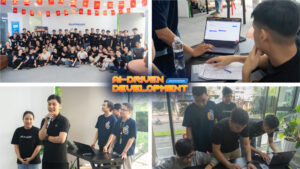The Impact of Ad Length on User Experience in Rewarded Video Ads
09/01/2024
1.37k
Table of Contents
Lately, in-stream ads gain its popularity among advertisers. Though users are getting paid to watch more ads, some psychology tricks would certainly improve ads placement for businesses. As a marketer or streaming solution provider, have you ever wondered how the duration of these rewarded video ads affects our willingness to engage and watch till the end?

The Blink-and-Miss Era
In the fast-paced digital landscape, the mantra seems to be ‘short and sweet.’ Rewarded video ads, often integrated seamlessly into our beloved apps, aim to strike a delicate balance between user satisfaction and effective advertising. Research suggests that shorter ads tend to be more successful in maintaining user engagement and encouraging viewers to watch the entire clip.
The Attention Tug-of-War
Picture this: you’re immersed in the latest mobile game, racing against the clock to reach the next level, and suddenly, an ad pops up. In such moments, the length of the ad becomes a critical factor. Shorter ads, typically ranging from 15 to 30 seconds, align with the modern user’s limited attention span. They deliver the intended message without pushing users to the brink of impatience.
Engagement vs. Irritation
The key question arises: are users more likely to engage with shorter ads willingly, or does ad length become a hurdle in the path to a seamless user experience? Studies show that users are more likely to watch shorter ads to completion. The brevity not only fits well into the user’s tight schedule but also reduces the risk of irritation associated with lengthy interruptions.
The Psychology of Time
Understanding the psychology behind user behavior is crucial. Shorter ads tap into the principle of instant gratification – users can quickly obtain their rewards without investing too much time. This psychological aspect enhances the overall positive association with the advertised content.
Quantifying the Impact
Numerous studies and user feedback analyses corroborate the idea that shorter rewarded video ads result in higher completion rates. Apps and games adopting this approach report increased user satisfaction, leading to a more positive perception of the ad experience.
The Mobile-First Perspective
In the mobile-centric era, where smartphones are our constant companions, the preference for concise content is more pronounced. Users appreciate ads that respect their time and seamlessly blend into the app experience. Shorter ads, in this context, emerge as user-friendly companions rather than disruptive intruders.
Beyond Completion Rates
While completion rates are a vital metric, it’s also essential to consider the holistic impact on the user. Shorter ads not only witness higher completion rates but also contribute to a lower likelihood of users abandoning the app altogether. The positive correlation between ad brevity and user retention highlights the importance of crafting ad experiences that respect the user’s time investment.
Challenges of Longer Ads
In contrast, longer ads face the challenge of maintaining user interest throughout their duration. As the clock ticks, users may become increasingly impatient, leading to premature skips or app exits. The risk of user frustration and negative associations with the advertised content rises exponentially with extended ad lengths.
Striking the Right Balance
As a result, advertisers must strike a balance that ensures the delivery of a compelling message within the allotted time. Creativity becomes paramount – advertisers need to convey their narrative effectively without overstaying their welcome. Clever storytelling within the confines of shorter ads can leave a lasting impression on users.
Conclusion: The Shorter, the Sweeter
In the world of rewarded video ads, the evidence leans strongly towards the effectiveness of shorter ad lengths in enhancing user experience.
As users, our journey through the digital landscape is marked by a series of micro-interactions. Short and engaging rewarded video ads, like friendly companions, enrich this journey without causing disruptions. Advertisers, the mantra is simple: keep it short and sweet, and watch your audience embrace the rewards with open arms.
Check out OTT streaming solution with ads setting feature from SupremeTech.
Related Blog





















